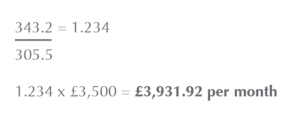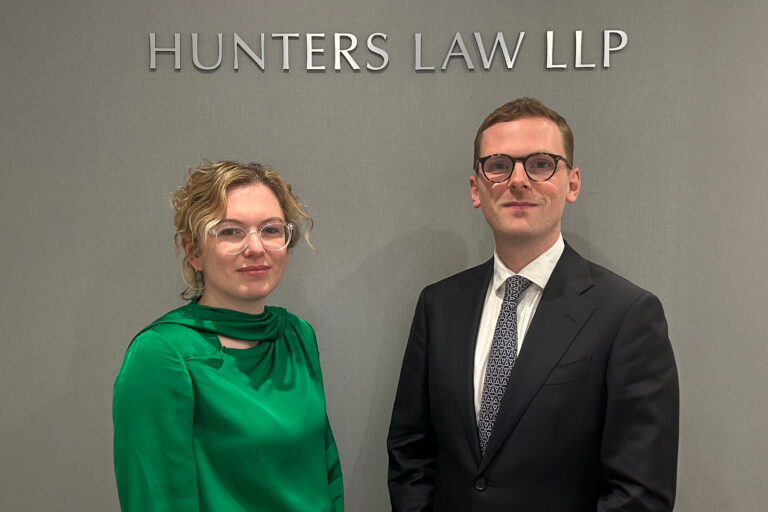Constance Tait discusses maintenance and inflation in 2022

Seven questions on maintenance and inflation in 2022
With inflation hitting 10.1% in the twelve months to July 2022, and energy costs soaring, many are concerned about balancing their income and outgoings. For separated families where maintenance is being paid, this balancing act can be particularly challenging. The amount of maintenance will have been assessed according to the recipient’s needs, usually based on a carefully prepared costs budget. Many of these costs will now have increased significantly, even if the budget was prepared only a few months ago.
- Do spousal maintenance payments increase with inflation?
It depends on the terms of the court order. Many orders, particularly those prepared by specialist solicitors, include an ‘index-linking’ provision which states that maintenance will increase once a year, on the anniversary of the first payment, in line with inflation.
Increases are usually by reference to either the Consumer Prices Index (CPI) or Retail Prices Index (RPI). The main difference is that only the RPI includes mortgage costs, and so the CPI is often used where the person receiving maintenance will not be making mortgage payments. RPI tends to reflect larger increases than CPI.
With inflation at its current level, index-linking can make a significant difference.
- My order includes index-linking – how do I calculate the new amount?
You need to look at the RPI tables / CPI tables, and find the inflation figure for the month of the change, and the figure from twelve months previously. You then divide the most recent figure by the older figure, and multiply the result by the amount of maintenance:

Multiplier x previous maintenance = new maintenance figure
So, for example, the July 2022 RPI figure was 343.2, and the July 2021 figure was 305.5. If the maintenance payable from July 2021 was £3,500 per month, the new maintenance payable from July 2022 would be calculated as follows:

If maintenance was set to increase by CPI the new figure would be £3,852.20 using the figures in the CPI table.
- If our spousal maintenance order has an index-linking provision, but it’s never been implemented before, can I still claim the increases?
Yes. It’s quite common for index-linking provisions to be forgotten about, and does not mean the receiving party has ‘waived’ their right to the increases. These provisions of the order remain binding and should be put into effect. This could involve a significant jump in maintenance: for example, if maintenance was set at £3,500 per month in July 2017, and the order provided for it to increase in line with RPI but that had never happened, implementing that increase now would increase maintenance to £4,411.31 per month.
It’s also possible to seek to recover the difference between what was paid and what ought to have been paid had the increases been implemented. It would usually best to discuss this with your former partner, as paying all of the unimplemented increases in one go could pose cashflow difficulties, so you might agree that only a proportion of the back-dated increases should be paid, and/or that they should be paid over time. You can also issue enforcement proceedings at court to recover the difference, but the court’s permission is needed to reclaim any sums that are more than 12 months old.
- What if I can’t afford to pay the increased maintenance under index-linking?
Whilst costs are going up, incomes are not necessarily increasing. However, the order – including any inflationary increases it provides for – remains binding and enforceable, unless and until it is formally varied.
If you will be in genuine difficulty in meeting the increased maintenance, then you should flag this to your former spouse as soon as possible, explaining your position, setting out what level of increase you calculate that you can afford, and supporting this with evidence. A meeting, perhaps assisted by a mediator, might be helpful in working out a way forward if your former partner accepts you would be in financial difficulties in making the full increased payments. If no agreement can be reached, you can apply to the court to vary the maintenance order – see below.
- What if there is no index-linking clause in the spousal maintenance order but I can’t afford my outgoings without an increase?
The first step should usually be to approach your former spouse and explain the situation. Be prepared with a budget setting out your income and outgoings, and know what level of increase you are seeking to balance your budget. It would also be worth working out how much maintenance would be payable if index-linking was applicable, as a cross-check. If your former partner is not open to discussing an increase, you can apply to the court for an upward variation.
- What’s involved in an application to vary spousal maintenance?
On an application to vary spousal maintenance, the court will look at any changes that have taken place since the original order – including increased costs but also factors such as income, earning capacity and cohabitation, with first consideration given to the welfare of any children of the family under 18.
Unfortunately, the reality is that in the changing financial climate, many may need to accept a reduction in their standard of living, so much will depend on the extent to which the paying party has surplus income in excess of their needs.
Variation applications usually take several months to be resolved through the courts, and the costs can become disproportionate. Seeking to reach a solution through solicitors’ negotiations or mediation is usually sensible. Another option, if your former spouse will agree, is arbitration, where a jointly appointed expert lawyer will make a binding decision – it can be significantly quicker and cheaper than court proceedings.
- What about child maintenance?
For most families, child maintenance is determined according to a government formula based on the paying parent’s income. These payments do not increase in line with inflation. The paying parent is required to tell the Child Maintenance Service (CMS) about any relevant changes to their circumstances, such as increased income, and the CMS also carries out an annual review, but whether maintenance increases will depend on whether the paying parent’s income has increased, not inflation.
Where the paying parent earns over £156,000 gross per year, and in some other cases (e.g. where they live abroad), the CMS formula does not apply, and the court has discretion to order (and vary) child maintenance. However, it will usually follow the CMS formula, adjusting it to apply to income in excess of £156,000, and inflationary increases may be provided for in the order.
How Hunters can help
If you’re concerned about maintenance and inflation, then be in touch with one of our team. Our mediators Henry Hood and Jo Carr-West can assist you and your former spouse in working together to resolve any difficulties arising in light of inflation, whilst all of our team of family lawyers can provide legal advice on your situation.





